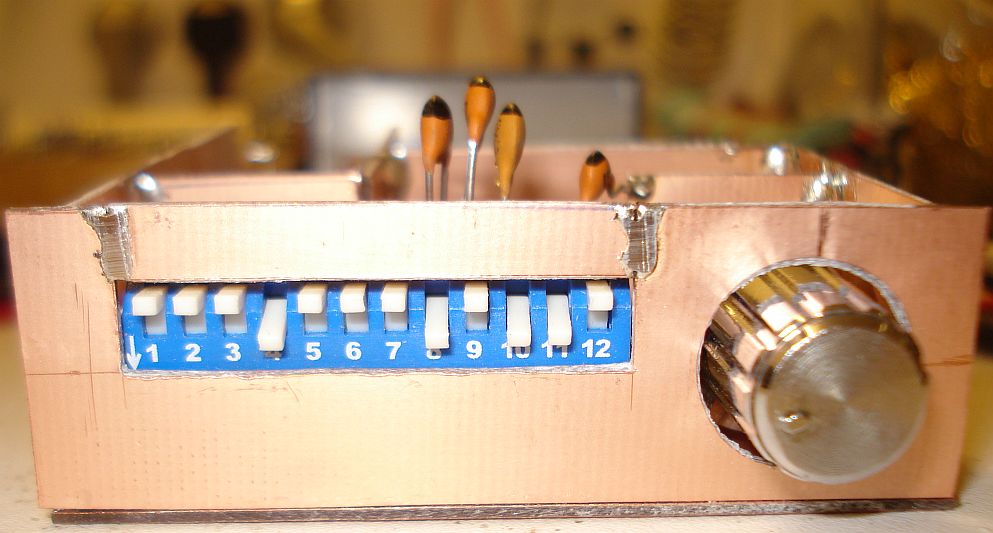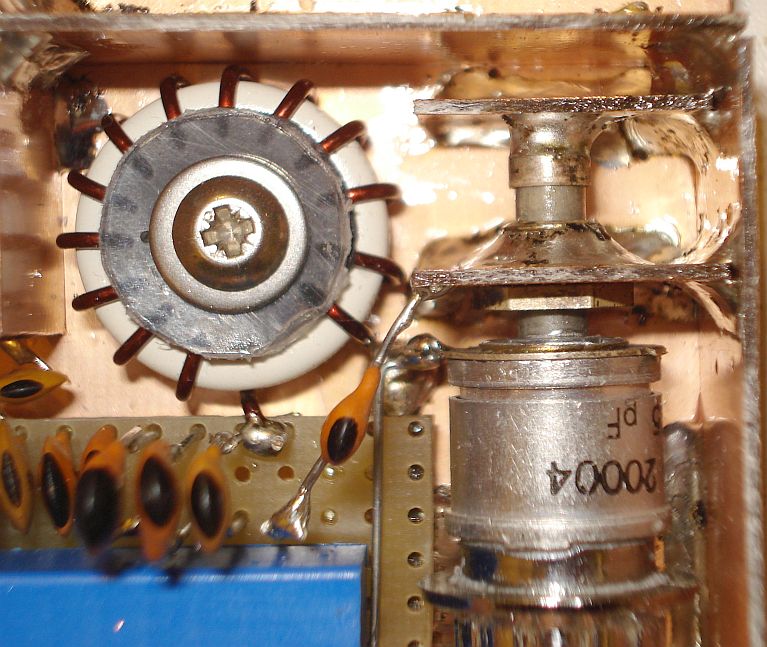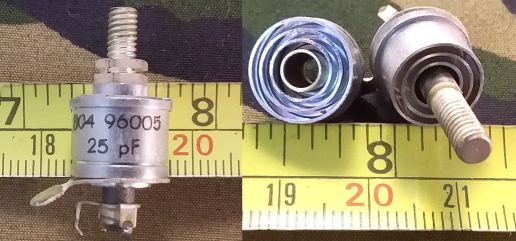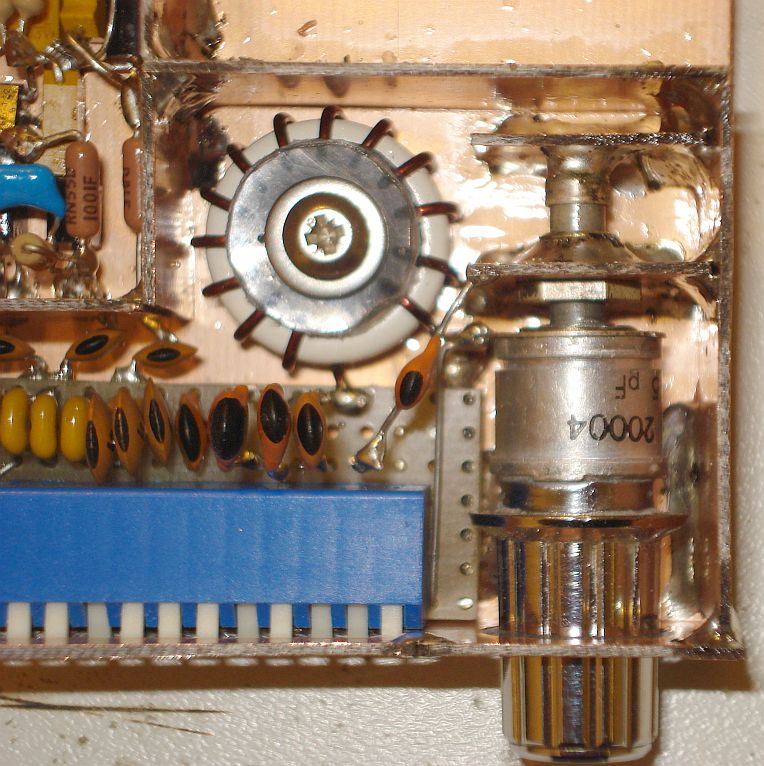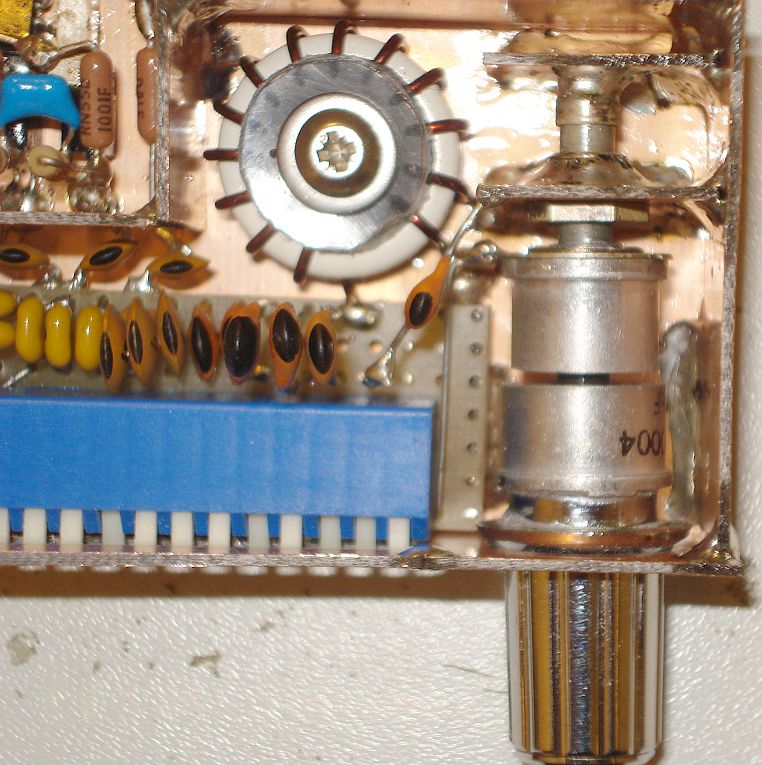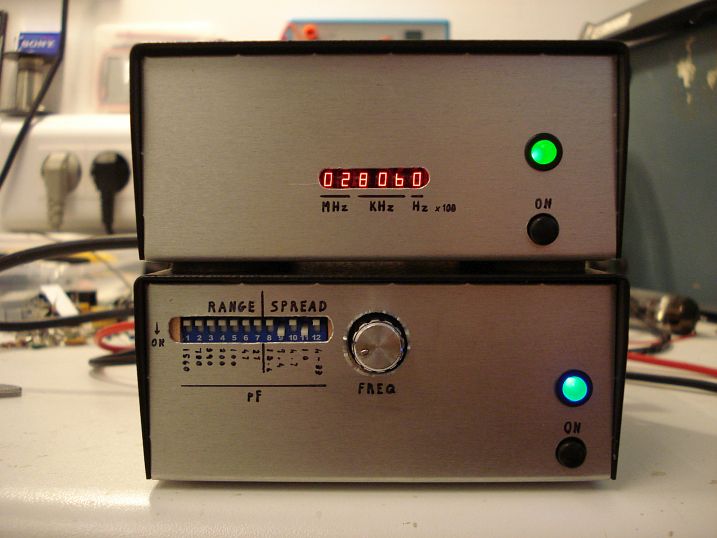
The
brilliant "miniVFO"
A simple, cheap, tiny, rock steady 3-30MHz VFO
Designed
by sv3ora

The minivfo (below) used as an RF signal generator and combined with my MCU-free frequency counter (above)
The minivfo internals
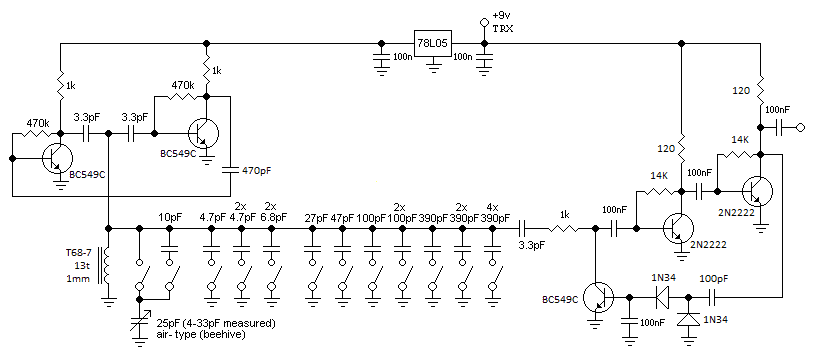 |
DIP switch settings notes: All the capacitors are switched in a "decade capacitor" way. So when for example you close the switches of 100pF and 47pF, you have a total capacitance of 147pF. The first switch close to the variable capacitor is used when full trimmer capacitance is needed (usually on lower bands). This switch is open and the 10pF one is closed, when only a part of trimmer capacitance is needed (spread), usually on higher bands or on lower bands to achieve greater span. The next three capacitors (4.7-6.8pF), are used to select the different segments of the spreaded trimmer capacitance. The final seven capacitors are used in lower bands, where span is adequate without the nead for any spread. However if greater span is needed in lower bands, the 4.7-6.8pF capacitors can be used in combination with these seven capacitors. Note, the miniVFO will operate even outside the HAM bands. There is lot of overlap in the capacitance and spread ranges, so that continuous coverage of 3-30MHz is achieved. |
